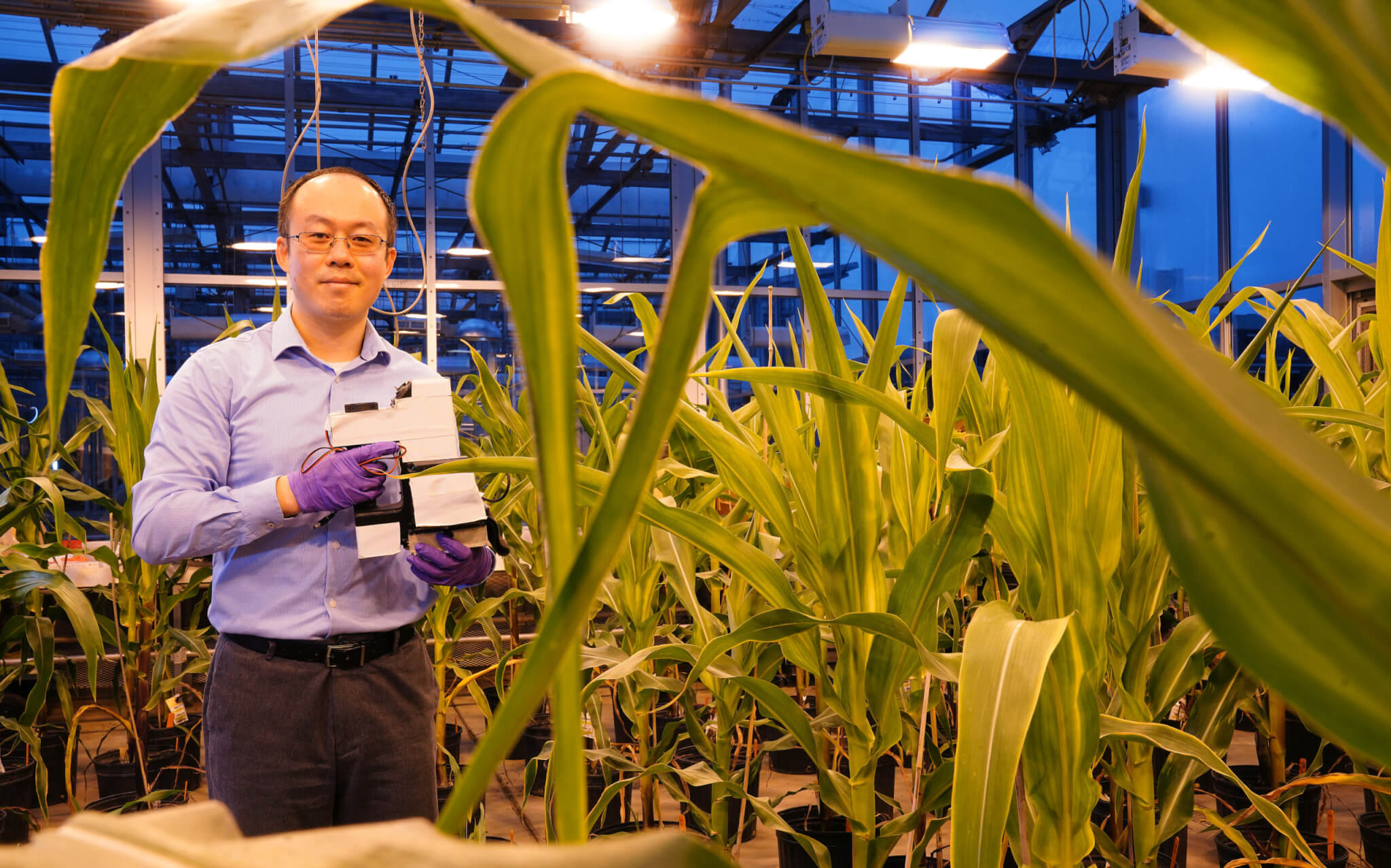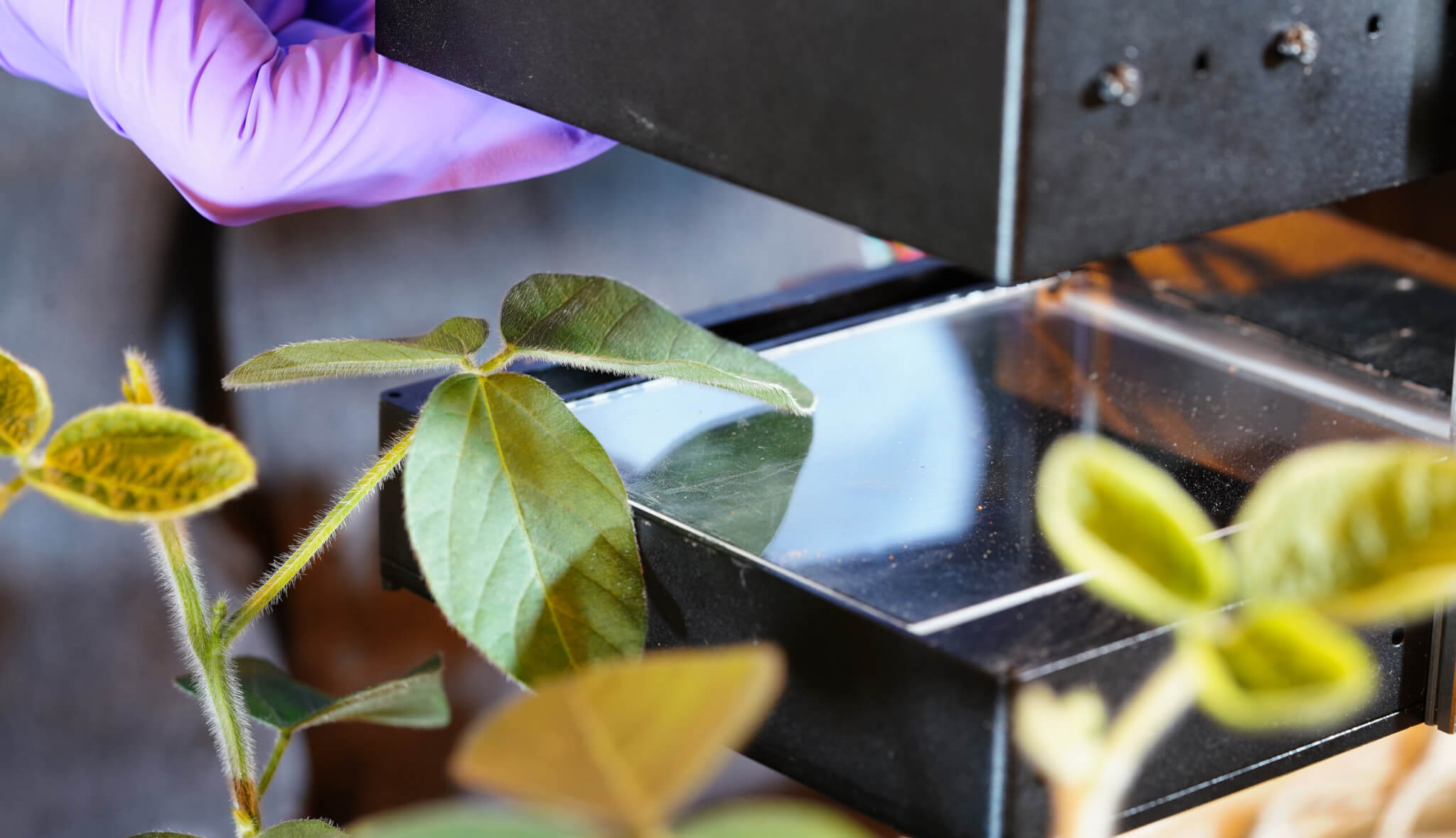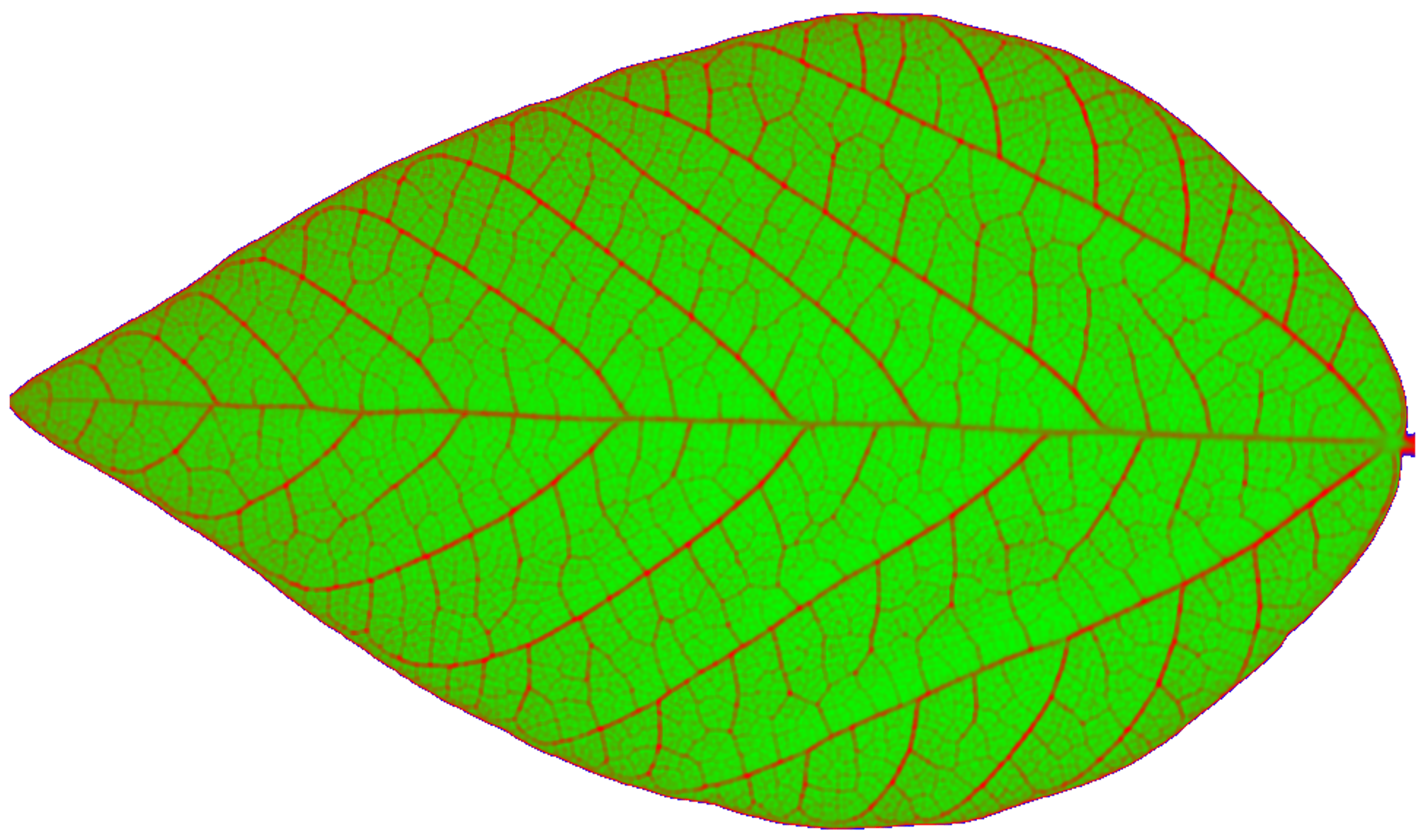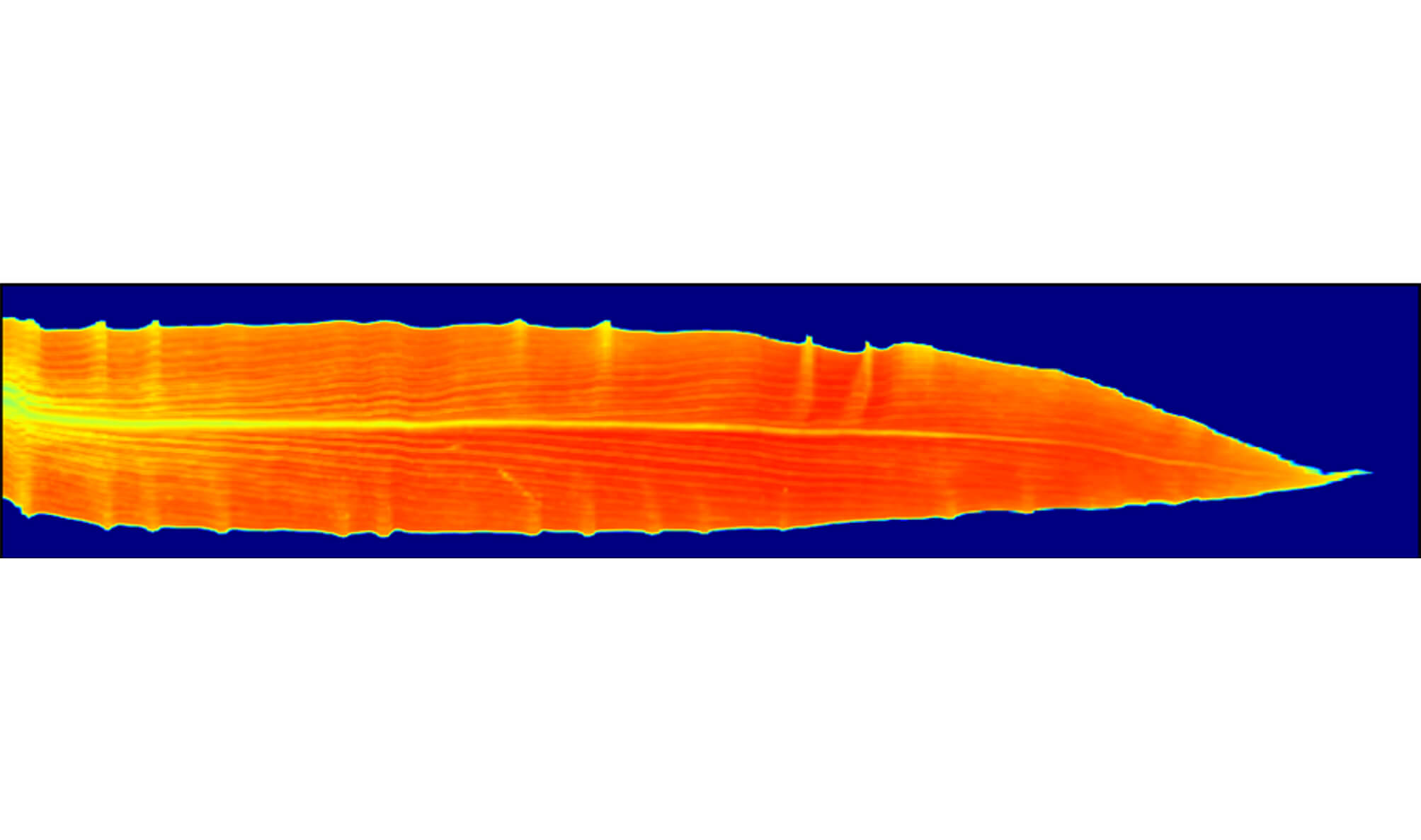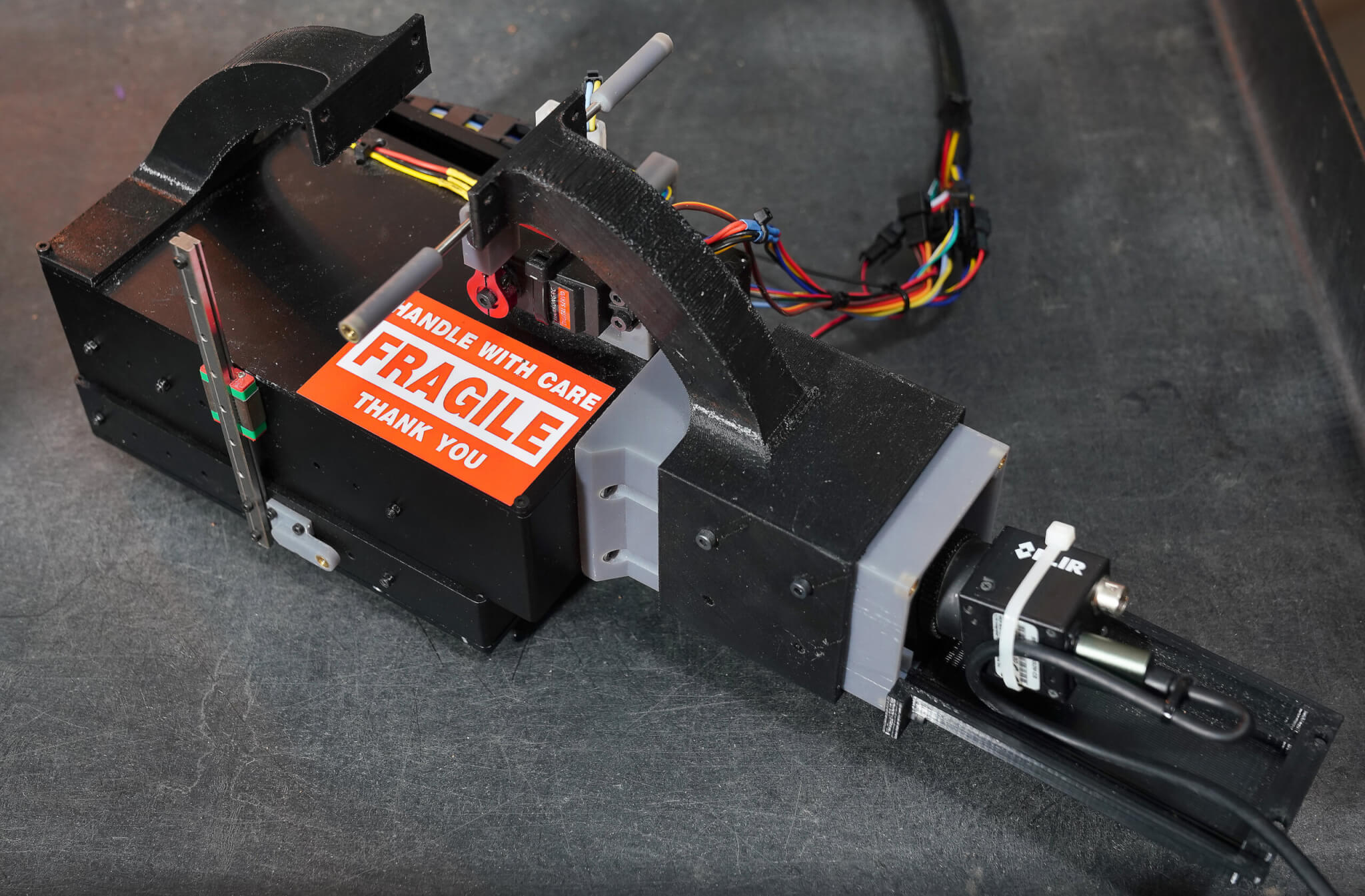ABE professor has a winner in his hands with LeafSpec
"Purdue is a magic place,” said assistant professor of agricultural & biological engineering Jian Jin, creator of LeafSpec. “We have so many diverse faculty members working on all kinds of plant science research projects. Purdue is probably the only place in the world that has the plant scientists, sensor engineers, data scientists and social scientists collaborating together to introduce a technology like this. It is the only place that this seed of an idea could have grown.”
LeafSpec, a handheld hyperspectral corn leaf imager, was recently selected as an AE50 winner. The award, sponsored by the American Society of Agricultural and Biological Engineers’ Resource magazine recognizes the top innovative products produced in 2020.
An idea takes root
“The idea for LeafSpec was formed at the Seed Technology Ideas Lab in January 2016,” Jin recalled. Glenn W. Sample Dean of the College of Agriculture Karen Plaut organized the event to generate innovative interdisciplinary research proposals for new agricultural technologies in food security.
“Dean Plaut assembled many faculty members from different departments in our college,” said Jin. “We did a lot of brainstorming on whiteboards until I proposed an idea with Gerald Shively, associate dean and director of International Programs in Agriculture and professor of agricultural economics. It excited both of us since I’m an engineer in agriculture and Jerry is a social scientist.”
Jin proposed the idea of using a smartphone and a handheld device to take images of crops for phenotyping. Shively recognized the usefulness for social scientists who could organize the gathered data to help solve regional food security issues in the world.
“With many people using the devices in one region, the data would be able to help social scientists understand the nutrient supply at a regional level,” said Jin. “They could analyze the economic problems to find out why people are suffering from hunger and help underdeveloped regions analyze nutrient issues.”
Jin and Shively submitted a proposal and were given $30,000 by the college to begin development.
Two ways to look at phenotyping
Plant phenotyping can be categorized into remote sensing and proximal sensing. Remote sensing gathers data on plants from afar using tools like drones. Remote sensing is known for its high throughput, meaning plants are surveyed quickly.
Proximal sensing, which LeafSpec uses, requires users to image plants individually but provides more information with higher resolution and less noise. “With proximal sensing, you can see details like disease spots, nutrient and stress distributions and veins on the plant leaves,” Jin explained.
Proximal sensing also promotes consistent results. With LeafSpec, the imaging takes place in an enclosed chamber, providing uniform lighting and imaging conditions. Usually, the atmosphere, clouds and sun angle can affect readings. “We live in a very noisy world,” noted Jin.
Attention to detail
Comparing his invention to proximal sensors on the market, Jin said LeafSpec provides more detail and reliability while requiring less work.
SPAD meters and spectrometers are the current standards. These devices read the greenness/spectrum of a single point on a leaf.
“If you measure a corn leaf from collar to tip, you will see a significant increase in NDVI/chlorophyll content,” said Jin. “If you move your sensor just one inch to the left or right, you might have a 30% change, so measuring a single point opens the door to inconsistency. LeafSpec gives you a real hyperspectral image of the entire leaf. That’s why we call it the first imager of its kind.”
Hardware is only a third of the picture
“Combining LeafSpec’s hardware with our software and Geographic Information System (GIS), our device has very unique advantages on the market,” declared Jin. “On its own, the hardware provides a beautiful hyperspectral leaf image of unprecedented quality, but that alone is not useful to breeders and farmers. We need to analyze the images and tell them what they mean.”
These questions are answered with Jin’s hyperspectral image processing algorithm and software.
Additional functionality was made possible by the National Science Foundation’s $4 million CSSI grant, which allowed the development of a cyber system to support agricultural sensors.
“The grant’s principal investigator, Carol Song, included LeafSpec among the user cases,” said Jin. Song is a senior research scientist in the Information Technology at Purdue (ITaP) research computing division. “Her cyber infrastructure is a fully functioning digital map. Carol’s group developed it to automatically receive sensor data from LeafSpec and provide data viewing functions on the real-time with a user-friendly interface.”
When a leaf is scanned, the nitrogen predictions, water and disease information will appear on the user’s smartphone within seconds. If the smartphone is connected to the internet, it will automatically upload predictions with the GPS location, time, weather and additional metadata. “We take care of everything for you,” said Jin.
Sales of LeafSpec begin
In 2018, Purdue’s Office of Technology Commercialization encouraged Jin to commercialize the technology, and LeafSpec LLC was founded in April. LeafSpec LLC was the only company selected to represent Purdue in the 2018 Ag Innovation Showcase in St Louis.
While Jin plans to continue developing his technology through 2021, he sold early versions of his devices to university labs and agricultural companies including Farm2U, a company in India that has used the device to scan apple tree leaves.
“Farm2U also sponsored research at Purdue led by my group,” Jin noted. “They sent us images they scanned in their apple orchards and we built models they used to predict disease at early stages.”
The initial sales made LeafSpec eligible for the 2021 AE50 award. “The current device and software meet the needs of researchers, but it is not completely ready for the much larger market of crop growers yet. We are confident we can introduce our matured technology by 2022.”
“Dr. Jin’s work is a great example of how research can translate into a practical application that will help plant breeders around the world accelerate their work in identifying the links between genes and traits that help to increase yields, improve drought and disease resistance and improve the sustainability of crop production,” said Nate Mosier, department head and Indiana Soybean Alliance chair in soybean utilization research.

